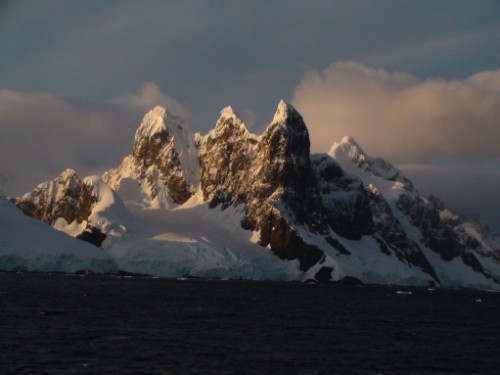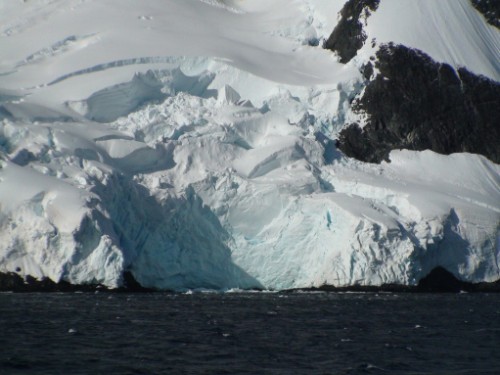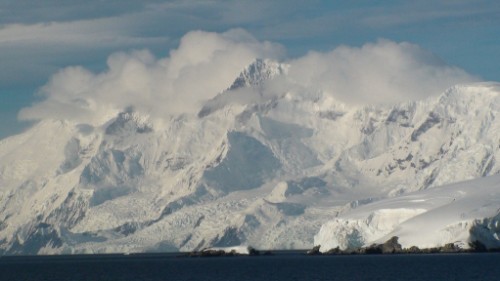Day 6
March 14th Lemaire Channel
Peterman Island (65˚10’S, 64˚10’W)
Melchior Island (64°19′S 63°0′W)
We cruise south through the narrow Lemaire Channel who’s high, sheer cliffs suggest that no passage could be found. the Channel is 7 miles long and less than a mile wide at its narrowest point. This scenic channel was named by Adrein de Gerlache for Jacob Lemaire, the Belgian explorer of the Belgian Congo.

Once through the channel, known as one of the most beautiful places in the world. The climate and ice conditions were good enough to visit Petermann Island which was the most southern land point of our expedition. Here we disembarked and saw the most southern colony of Gentoo penguins which nest near our landing spot. On this island also saw a colony of beautiful Adelie penguins, skuas and blue-eyed shags.

Petermann Island is a small island just off the west side of the Antarctic Peninsula of Antarctica, just a short distance south of Booth Island and the Lemaire Channel.This 1km-long island rises up to approximately 150 metres above sea level. An ice-cap covers part of the northwestern end of the island and a potentially crevassed permanent ice-slope largely covers the southern end of the island. Many small cobbled bays indent its coastline, with nearly continuous rocky outcrops along the shore.
The island was discovered by a German expedition of 1873-74, who named it after geographer August Petermann. The French Antarctic Expedition of 1908-10 wintered over aboard ship in a cove on the southeast side of the island, named Port Circumcision because it was spotted 1 January 1909, the traditional day for the Feast of the Circumcision.
Adélie Pinguine
The Adélie Penguin is a species of penguin common along the entire Antarctic coast and its nearby islands. They are among the most southerly distributed of all seabirds, along with the Emperor Penguin, South Polar Skua, Wilson's Storm Petrel, Snow Petrel, and Antarctic Petrel. In 1830, French explorer Jules Dumont d'Urville named them to for his wife, Adélie.

These penguins are mid-sized, being 46 to 75 cm (18 to 30 in) in length and 3.9 to 5.8 kg (8.6 to 12.8 lbs) in weight. Distinctive marks are the white ring surrounding the eye and the feathers at the base of the bill. These long feathers hide most of the red bill. The tail is a little longer than other penguins' tails.
The Adélie penguin is known to feed mainly on Antarctic krill, ice krill, Antarctic silverfish, and Glacial Squid (diet varies depending on geographic location) during the chick-rearing season. The stable isotope record of fossil eggshell accumulated in colonies over the last 38,000 years reveals a sudden change from a fish-based diet to krill that started two hundred years ago. This is most likely due to the decline of the Antarctic Fur Seal since the late 1700s and Baleen whales in the twentieth century. The reduction of competition from these predators has resulted in a surplus of krill, which the penguins now exploit as an easier source of food.

Melchior Islands is a group of many low, ice-covered islands lying near the center of Dallmann Bay in the Palmer Archipelago. First seen but left unnamed by a German expedition under Dallmann, 1873-74. Resighted and roughly charted by the FrAE under Charcot, 1903-05. Charcot named what he believed to be the large easternmost island in the group "Ile Melchior" after Vice Admiral Melchior of the French Navy, but later surveys proved Charcot's "Ile Melchior" to be two islands, now called Eta Island and Omega Island. The name Melchior Islands has since become established for the whole island group now described, of which Eta Island and Omega Island form the eastern part. The group was roughly surveyed in 1927 by DI personnel in the Discovery, and was resurveyed by Argentine expeditions in 1942 and 1943, and again in 1948.

